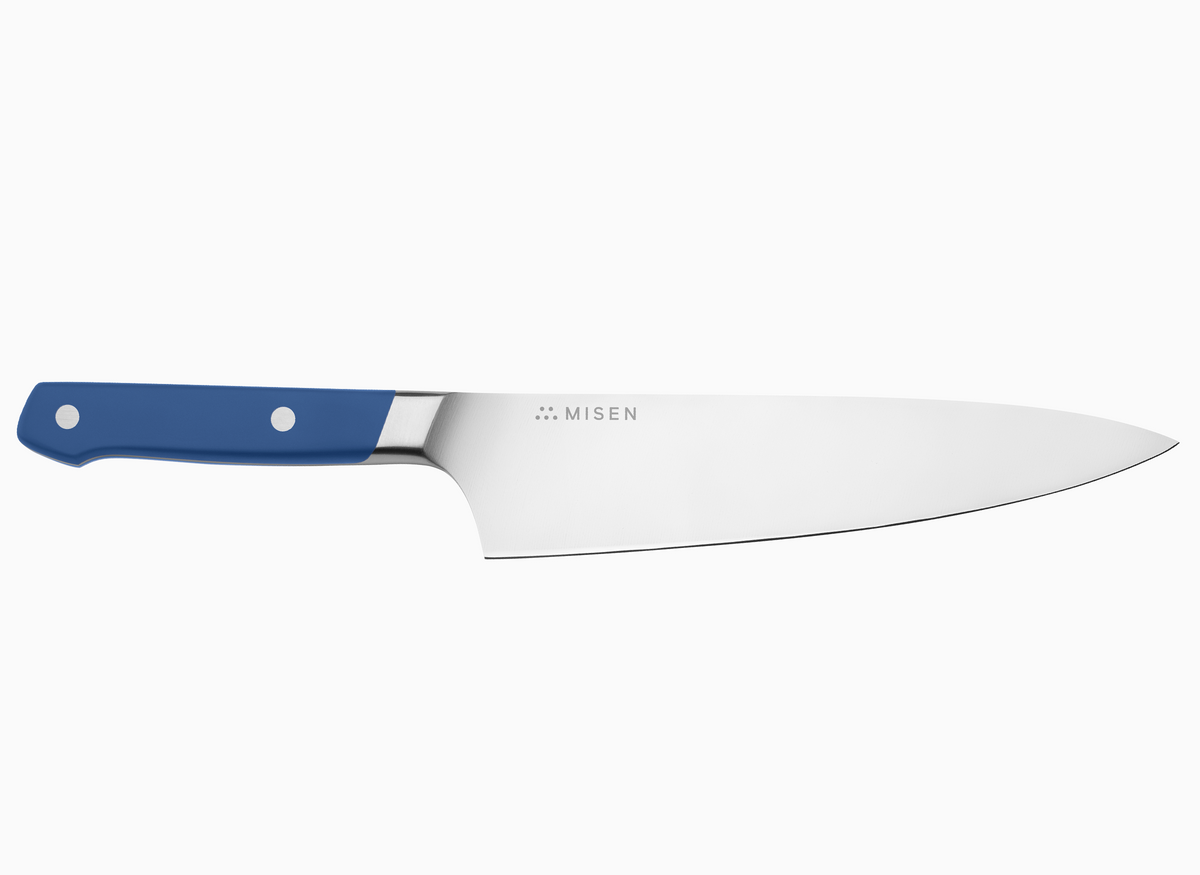Why Steel Matters
Kitchen knives are made from a dizzying array of types of steel, with names like VG-10, 440C, 8Cr13MoV, 52100, and so on.
Some of these are trade names, some of them are chemical formulas, but they’re all incomprehensible to the end user. Fortunately, what makes a particular steel good for a knife is really pretty simple.
All steel is made up of mostly iron, alloyed together with carbon and portions of other elements that can include nickel, chromium, manganese, and vanadium, among others. It’s these additional elements (and the proportions in which they’re present), along with how the steel is processed, that give different types of steel different characteristics. For a kitchen knife, the most important characteristics are hardness, toughness, and corrosion resistance.
These characteristics are related. For instance, to make a steel stainless—that is, highly resistant to rusting from moisture, salt, and acidity—manufacturers blend a high proportion of chromium into the alloy. That helps the steel keep its shiny coat, but at the same time it can make it less tough.
Toughness
Refers to how much physical abuse a steel can take without breaking. Toughness (or durability) is distinct from hardness; in fact, metals like lead that are very soft are particularly difficult to break.

Hardness
Is measured in the lab by poking a diamond point into the steel and seeing how deep a dent it makes. So a material like glass is considered very hard, since it’s difficult to dent, but it’s not tough at all. 
A tougher steel can make a more durable knife, but for the most part, toughness is not as critical in the kitchen as it is when choosing a steel for making hatchets or crowbars. It’s hard steel that gives a kitchen knife the ability to do what everyone wants it to: acquire a sharp edge, and stay sharp for a long time.
Carbon is the key element for making steel hard, which is why another buzzword tossed around with kitchen knives is “high-carbon steel.” Most steels used for knife making have 0.5 percent or more carbon in the mix. Very hard steel can produce a thin, stiff blade with an edge that takes a very long time to lose its edge. But the corollary to hardness means that such blades are also more brittle, and can break if abused or dropped. And even though the sharp edge is slow to wear down, it can suffer tiny chips that make it less effective.
Misen knives are made with Japanese AUS-8 steel, which contains more carbon (0.8 percent) than most “premium” kitchen knives, which is hard enough to hold a sharp edge for a long time, but not so hard that toughness is comprised.
As always, the answer is to find a balance: an alloy that’s hard enough to stay sharp but not brittle; durable but not soft; and easy to keep free of corrosion (which can also dull the edge) while not pouring in so much chromium and nickel that it loses strength. That’s why Misen knives are made with Japanese AUS-8 steel, which contains more carbon (0.8 percent) than most “premium” kitchen knives, which is hard enough to hold a sharp edge for a long time, but not so hard that toughness is comprised.








